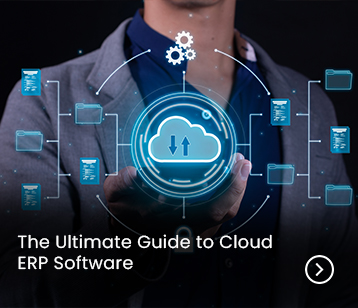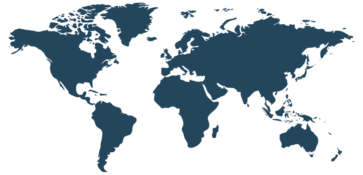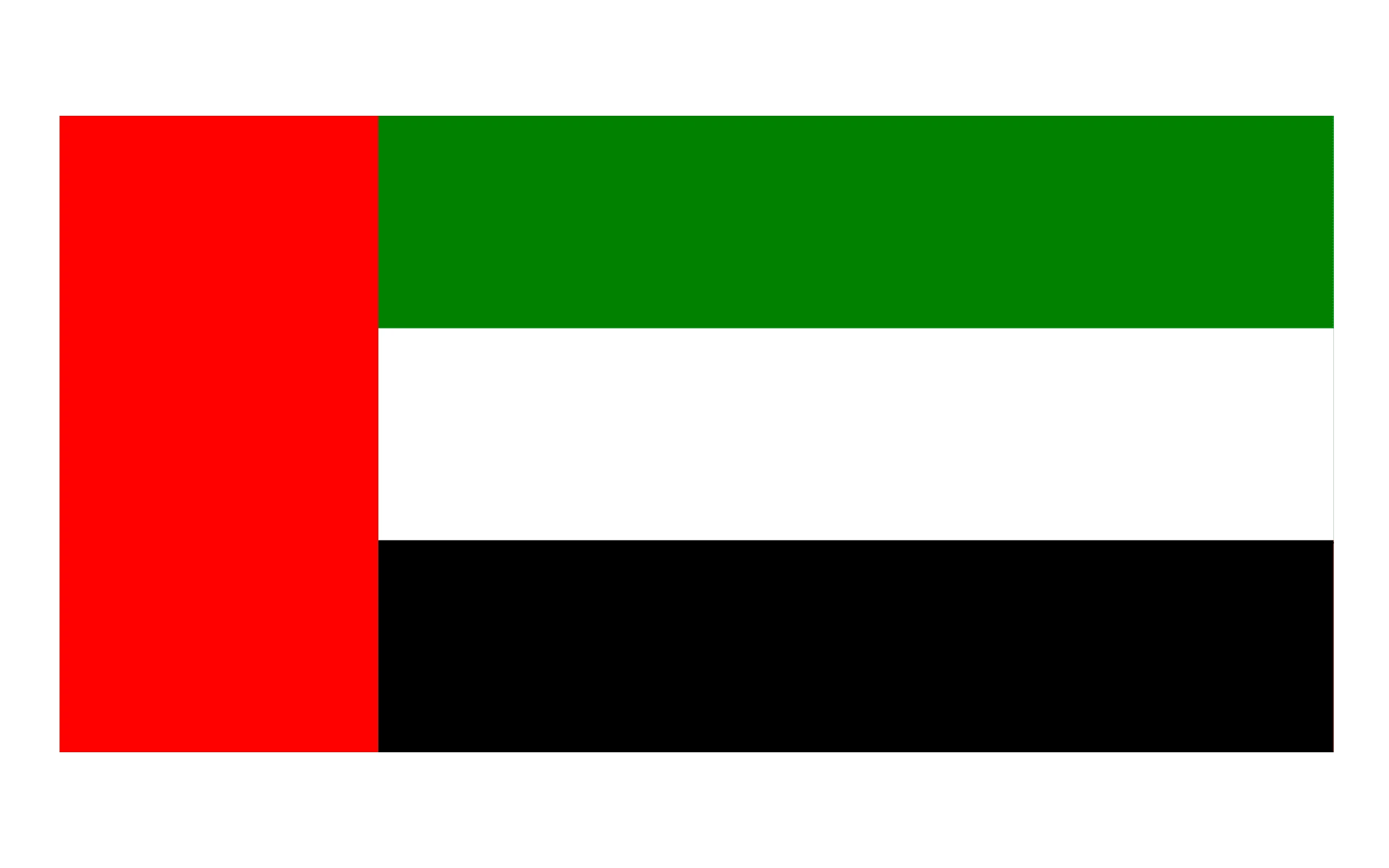ERP Software FAQs
The other approach to manufacturing besides discrete is process manufacturing, which includes volumes of raw materials being refined and processed for sale, and involves mixing of ingredients according to specific formulas or recipes. In process manufacturing, the products are formulation-based, and hence the ingredients cannot be taken out from the products once they are processed to create the final product. The products are produced in bulk and packaged for shipment.
Process manufacturing items include food, pharmaceuticals, specialty chemicals, cosmetics and paints to name a few- the products that are result of recipes and formulations which when mixed, change the composition of the original raw material and cannot be dismantled. It is an intricate process as the raw materials are converted/transformed, with their volume, density, mass, physical properties etc. all getting changed during the manufacturing process.
Discrete and process are two branches of manufacturing that differ vastly. Describing in brief, while in discrete manufacturing the products are BOM based, and can be broken down as they are assembled by nuts, bolts, brackets, wires, etc., process manufacturing involves manufacturing of products that are formulation-based, and the ingredients of which cannot be taken out from the products once they are processed to create the final product. Discrete manufacturing is all about production of distinct items like computers, furniture, electronic appliances, etc. using the components that can be touched and counted, whereas process manufacturing deals with production of homogeneous products like paint, cosmetics, food & beverages, pharmaceuticals, oil, etc.
In discrete manufacturing, the production follows a route, such as assembly line. On the other hand, in process manufacturing, the ingredients are blended or refined in batches and manufactured using formulas/recipes.
Manufacturing, and production- two terms that are often used interchangeably, and are considered as synonyms in the business world. However, there are some key differences between the both. To begin with, manufacturing is one of the stages of production, which is a broader term with huge scope. Manufacturing involves conversion of raw materials into a tangible product with the help of resources like men, machine and material.
Production, on the other hand, is the process of converting any kind of inputs to outputs either tangible or intangible, with or without the use of machinery. While in manufacturing the end result is invariably goods which are ready to be sold, it can be either goods or services in production, with the focus largely being on utility creation. Also every type of production may not come under manufacturing, but every type of manufacturing falls under production.
Lot tracking is an important concept, and particularly has great significance in process manufacturing industries, which are highly regulated. In industries like food & pharma manufacturing, there is always a risk associated with the products, as any non-conformity can have disastrous repercussions on the end consumer. To keep a check on the same, lot tracking is used. It is nothing but a mechanism that has the ability to properly track product lots from start to finish along the supply chain. Here, a “lot” refers to manufactured lots or, in other words, “batches.” Through lot tracking, manufacturers can locate a particular product in the supply chain, and the path of a specified unit and batch of product from the manufacturing unit, through the supplier, and finally to the customer. This way, the process manufacturers know exactly where the nonconformity happens, and which lot to recall, if required.
ERP refers to a business management software that manages key business functions such as inventory, purchase, production, sales, accounting, regulatory compliance, quality control (QC), traceability, and other back-end functions of a business. Whereas POS, or point of sale, refers to the front-end system that manages the transaction itself, once the customer steps into the picture.
ERP and POS are two different systems. Neither can one perform the role of the other. Any small business may function satisfyingly in the absence of the either. But if you talk about a mid/large-sized retail business, it most certainly needs to consider integrating the two in order to successfully meet the customer demands, manage inventory, and streamline the overall processes to drive more sales.
Remember, a POS system is not an ERP and vice versa. But the two have their own value, and having both is in best interest of your retail business.
The small manufacturing businesses have a lot to worry about, right from dealing with intense competition, time-consuming as well as error-prone manual data processing, ever-changing market trends, inaccurate scheduling, poor customer service, meeting quality and statutory guidelines, to the day-to-day operations that keep the business going.
To deal with these challenges, small businesses need an ERP solution that’s tailor-fit to their specific needs; one which can give them visibility into different aspects of their business, real-time access to critical business data, and reduce their operational risks as well as the total cost of ownership, in addition to addressing the challenges mentioned above.
There are a number of ERP solutions available in the market for small businesses. They must pick one that aligns with their business needs, and importantly budget. Preferably, a Cloud ERP is best fit for small businesses, taking everything into account.
ERP Vendor evaluation is a step-by-step process. Once you shortlist the vendors based on certain criteria such as your business needs, budget, etc., you can evaluate them in a lot of different ways. You can gather information from outside sources like the clients that vendor is currently serving, or has served in the past. Once you are sure about the vendor, you can invite him for a demo session, where you can assess him on different parameters such as industry and technical expertise, functional knowledge, expertise in project management, background check, ability to deliver the implementation on time, keeping the budget, having required tools and resources to fulfill the needs of the implementation, long-term support post implementation, future development roadmap, Total Cost of Ownership (TCO), including, license fees (including third party), implementation fees (training and consulting), support, hardware/software and maintenance fees, so on and so forth.
SAP Business One, or simply SAP B1, is an integrated business management software solution designed specifically for small and mid-sized businesses. It covers all the major aspects of a business including sales, procurement, production, finance, customer relationship management, vendor relationship management, inventory, planning and scheduling, reporting, etc. SAP Business One predominantly integrates all the aforementioned, as well as the other, business functions, eliminating the need for separate point solutions and the complicated integration of several modules. It is extremely easy to use, and helps you comply with all the major regional, national, and international regulatory mandates. Importantly, it can be installed on a server, or in the cloud. SAP Business One is sold through partners, so you can pick the best ERP vendor who sells, installs, implements, trains and provides support on SAP Business One.
An ERP is a business management software solution which comes with a set of integrated applications that allow a business to gather, store, manage and interpret data from its different activities in real-time, thus ensuring its smooth functioning. Integrating different core processes of a business such as finance, supply chain, manufacturing, procurement, marketing & sales, planning etc., into a single system, an ERP facilitates flow of real-time information across departments and empowers data-backed and accurate business decisions.
SAP refers to the products offered by the company SAP AG, globally the biggest name in the ERP software space. SAP and ERP are often used interchangeably only due to the fact that SAP is the world’s largest vendor of ERP systems. To put things into perspective, ERP is a superset of SAP, whereas the latter is a tier 1 ERP software offering.
ERP, Enterprise Resource Planning (ERP), is a software solution designed with the purpose of streamlining business processes, improving efficiency, and reducing waste. The software integrates with the company’s individual yet dependent departments (like: sales, purchase, inventory, production, warehouse, quality assurance, finance, and planning), gathers information, and act as a central repository of entire real-time operational information.
In other words, ERP collaborates different processes into one fluid system. Consequently, helps administrative & management authorities to gain a fuller picture of what’s going on in their business and take timely, accurate decisions. It has the ability to manage all the individual reports created by the various business processes in the same software.
There are many benefits of an ERP system, but the chief ones are:
- Real-time information that improves decision making
- Helps make realistic estimates and forecasts
- End up creating duplicate records and reports
- Greater control on operations and product traceability
- Remove information barriers between departments
- Automates repetitive tasks formerly performed manually (like: generation of delivery notes, invoices etc.)
- Quickly respond to market & customer needs
- Assures better & high quality
- Ensures standardised processes.
- Reduces wastage, thus lowers cost
The key factors that influence the total cost of ERP software are:
Number of users
Most ERP systems are priced per user. Start by determining how many users will be using the software.
Modules
ERPs are priced per modules. So, don’t pay for unnecessary modules. Assess your needs, requirements, and only choose the modules you need.
Add-Ons
Third party software licensing can be about 10-15% of the overall cost.
Implementation
Plan for an implementation to software coat ratio of 1:1.
Maintenance & Training
Be sure to ask vendor about additional costs associated with network fees, online training, etc.
Customization
When in-built functionality is not enough, additional charges may incur.
Different modules of ERP (purchase, sales, inventory, planning, production, quality, compliance, & costing) integrates with different departments of an organisation respectively, collects real-time information, and stores them in a centralised database. This centralised data can be accessed by authenticated person(s) as and when required. Consequently, ERP eradicates the need for different department to store their data distinctly in-turn prevents data duplicity besides reducing chances to err. The operations and information flow becomes seamless and smooth.
Therefore, whether it be receiving customer orders, planning their production, purchasing raw materials, or processing them into finished good along with ensuring assured quality; ERP plays a major role.
The five major component of ERP systems are:
Planning
ERP helps to plan when, what and how much to produce and procure to balance & supply.
Sales
Right from maintaining detailed customer information, defining price matrix, handling discounts and taxes, generating orders, managing picking, issuing, packing, dispatching finished goods to generating invoice; ERP handles all to ensure timely deliveries.
Purchasing
Maintaining vendor details, evaluating them, tracking orders from generation to receipt of materials, generating invoices, maintaining contracts and more is what ERP’s Purchase module does.
Finance
Offering you the ability to quickly analyse the real-time cash flow; ERP financials helps you track operational costs.
Manufacturing
Helping you through every phase of production; right from developing and maintaining formula/recipes, tracking costs, producing finished good, ensuring quality to meeting compliance; ERP’s Manufacturing leaves no doors to errors.
On-premise ERP requires specific hardware and software configuration to get implemented. It is implemented on in-house servers at your own workspace. Being implemented on in-house server, the user himself needs to supervise and secure ERP systems and data under their control.
Additional advantage of the on-premise ERP is – it is flexible to customize it and make it much adaptable to changes.
Being SaaS based model, Cloud ERP can be accessed through any device using an internet browser. In other words, it eliminates the need of any hardware or software configuration. This in a way, eliminates setup costs involved, the user have to pay on monthly basis.
Moreover, it also notifies users of every software updates and provides them instantaneously. Data backup and disaster recovery adds icing on the cake for the users.
The benefits of Cloud ERP are:
- Anytime, Anywhere access
- Eliminates specific infrastructural costs
- Automatic updates
- Promises least possible server downtime
- Offers data security
- Makes arrangements for disaster recovery and backup
- Allows increasing the number of licenses whenever required
Accordion Content
Typically there are three types of ERP systems- on-premise ERP, cloud ERP, and hybrid ERP.
On-premise is the traditional ERP software, which has a database that resides on an onsite server and hardware. It is managed by the IT staff of the company which has got it implemented.
A Cloud ERP is provided as a service and hosted on vendor’s servers. In this case, the software and its data is managed centrally at a remote datacenter (internet “cloud”) by the ERP vendor and accessed by customers through a Web browser.
A hybrid ERP solution is the combination of the two ERP – on-premise & cloud. By opting for a hybrid ERP, a company can adopt cloud applications while also retaining its on-site ERP resources. Greater mobility, ease of installation and outside support are some of the benefits that make businesses go for hybrid ERP.
GMP or good manufacturing practices in the food industry are nothing but a standard set of principles, preventive measures and hygiene practices which ensure that the food products are consistently produced, handled and controlled in accordance to the quality and safety standards. The GMP guidelines offer guidance for manufacturing, testing, and quality assurance to make sure that the final food products being produced are safe for consumption. GMP are important for food manufacturers in order to produce safe food products, and not implementing them can in fact prove costly to the food businesses, as they may have to pay huge penalties for failing to meet the safety standards in absence of GMP.
The pharmaceutical industry is highly regulated, and thus meeting the industry, environmental, regional/national/international regulatory requirements, as well as the good manufacturing practices (GMP), is extremely important, if not a non-negotiable prerequisite for the pharmaceutical manufacturers. The pharmaceutical manufacturers need to operate on a business model which adheres to all the industry norms as well as the government regulations. The US Food and Drug Administration (USFDA), European Medicines Agency (EMA), and other leading bodies around the globe bring about changes in the regulations from time to time, thus compelling the pharmaceutical manufacturers to drive compliance by dedicating significant resources such as ERP software to ensure regulations are implemented and processes are validated.
SAP Advance Track and Trace for Pharmaceuticals, or simply SAP ATTP, is an SAP offering in the ERP space dedicated to the pharmaceuticals industry. It predominantly helps the pharma manufacturers address the regulatory requirements pertaining to serialization and track & trace of pharmaceutical products. International laws and regulations, IT and logistics are vital components of serialization, and play a huge role in making it complicated. But SAP ATTP helps reduce the complexities for the manufacturers by providing them assistance on reporting requirements, validating products, integrating business processes, minimizing the costs of maintaining compliance, supporting a secure supply chain, and communicating with regulatory bodies, thus contributing to patient safety. Working as a track and trace software, SAP ATTP integrates serialization with a pharma manufacturer’s processes and provides country-ready reporting packages.
Customer relationship management, or CRM, is a set of practices and strategies which along with the use of technology offers the sales, marketing, and research functions of a business with a way to collect, store, manage, and analyze customer data and interactions throughout the customer life cycle.
Enterprise resource planning, or simply ERP is a business management tool that allows a business to collect, store, manage and interpret data from its different functions such as customer relationship management, accounting, supply chain, manufacturing, human resources, inventory, procurement, marketing & sales, planning etc., to provide a unified solution.
The basic difference between CRM and ERP is that while CRM focuses on the management of customer relationship with the enterprise, ERP focuses on managing the different functions of the business including CRM. So, in a way, CRM is a subset of the ERP.
Yes, most of the modern ERP systems integrate seamlessly with CRM systems.
While the two systems have traditionally remained separate systems, over the years businesses have realized that integrating the CRM and ERP can benefit their business in more ways than one. Implementing CRM and ERP gives businesses a lot of advantages such as faster sales cycles, less downtime and waste reduction, etc. But there is still a lot more that can be achieved by integrating the two so as to maximize the growth. The integration between the two systems can remove friction within the business and create a better end-to-end experience for the customer, besides helping with accurate quotes through greater visibility into company’s inventory and costs, reduced duplication and increase knowledge sharing, and better forecasting and more accurate planning, among other things. Many ERPs today have their own CRM module that make the process even more seamless along with shunning the efforts and resources required in integration.
The very idea of getting an ERP system implemented for your business can invoke a lot of happy thoughts. Thinking of streamlined processes, improved productivity, increased profitability, and reduced costs & risks can bring you peace of mind, but one thought can quickly bog you down as well- the worry of calculating the ROI of the ERP system. But worrying doesn’t help; figuring it out does. So how to go about it? By weighing the costs and benefits involved with the ERP project.
To determine the ROI potential of an ERP system, businesses can start with calculating direct/in-direct costs such as consulting fees, license fees, hardware costs, maintenance fees, training costs, etc. This should be followed by a comparison between current & future situation of factors such as productivity, business visibility, compliance, forecasting, costs, sales numbers, etc., after assigning a relevant cost to each one of them. ROI figure is then calculated as returns minus the costs, divided by the costs, with the positive percentage representing a gain, while a negative percentage indicating a loss.
Most businesses deploy an ERP software so that they can have all the departments synced and information moving in a transparent and easy manner between all levels and departments. However, majority of those businesses don’t take ERP maintenance seriously and neglect the need to have an ERP maintenance plan. But the reason why the businesses must have an ERP maintenance plan is because maintenance increases the life of an ERP and keeps it healthy for a long time.
ERP maintenance can be defined as a set of post-implementation activities related to the software offered by the vendor who has implemented the software. The scope of ERP maintenance ranges from the time the system goes live until it is retired from an organization’s production system. The objective of maintenance is to fix the bugs and keep the system up-to-date and running, and provide assistance to the system users in using the system. It covers site evaluations and on-site training by the consultants, uninterrupted support, upgrading to new versions/releases, and performing patches.
Gone are the days when businesses would capture the necessary data, extract it, manipulate it, reconcile it, and put it into reports using paper-based, manual methods. This would take an eternity. Today, when everything has become data-driven in the contemporary business world, an ERP software not just collects and stores large volume of crucial customer as well as business data, but also allows the businesses to easily access and report on it in real time; thanks to the ERP reporting function that has turned the tremendous amount of data into an extremely valuable resource.
ERP comes with a host of out-of-the-box reports for your daily reporting needs for various processes, levels and business needs. Many ERP even offer creating customized reports or adding customized fields of your reports to get just what you want and when you want it. New-age reports in the form of Dashboards are level-next in this section allowing users to perform indepth analysis on data and get desired information in just few clicks.
If you are running a manufacturing business, selecting the right ERP solution- one that meets the most-specific needs of your business and proves to be a perfect fit, is a tricky task. The ERP selection process can be defined as the process that helps organizations assess where their business currently stands, and figure out which areas can be improved upon, so that they can choose the right ERP solution that helps them achieve their goals.
The ERP selection process is a crucial process; one that can potentially make or break the business. The key to select the best ERP system is to follow a methodic, structured, and well-executed software selection process. A typical ERP selection process consists of certain key phases including analysis of business needs, project planning, vendor analysis, demo sessions, request for quotations/proposals, reference calls/site visit, and final decision making. By following these steps, businesses can accumulate the information needed to make a well-informed software selection.
Implementing an ERP system is a costly proposition, as the project requires a substantial upfront investment. It goes without saying that it is the best investment a business can possibly make. However, even as you start the project with a fixed budget in mind, more often than not the project goes over budget, even derailing the implementation at times. This happens as the organizations fail to factor in a variety of hidden costs associated with ERP implementation.
Some of the many hidden costs of an ERP solution that are worth a consideration include the costs associated with training, testing, unanticipated customization, data conversion, add-ons to the core software, data analysis, change management, upgrades, integrations, maintenance, time given by the consultants, and backfilling, etc. Knowing these hidden costs in advance helps, as organizations can make a long-term plan and make a cost estimate considering them.
An ERP selection process is a multilayered one, and hence needs multiple people handling it at different stages. However, to begin with, the company must name an ERP project manager to oversee the entire process from start to finish. To have, or not to have an external consultant involved in the process is completely the company’s prerogative. Apart from the ERP project manager, several people who hold crucial positions in different departments of the organization must be a part of the ERP selection process. For ex: the head of the IT department during the introduction phase, the key ERP users from different departments during the demo phase, the CFO and the COO during the discovery stage, the CFO and the CEO for the review of quotation as well as background check, and all the decision-making people for the final decision on ERP selection.
The decision to implement an ERP system is a massive one for any organization. It involves investment in terms of money, time, manpower and other resources. So naturally it is one decision that has to be made with careful consideration, because it can potentially make or break the organization’s future. Over the years we have witnessed the stories of ERP failures, where the implementation has gone horrendously wrong and ended as a disaster for the organization. It is hence imperative for the businesses to have the right team in place to select the ERP and follow a structured, methodical and rational process while evaluating the options and considering one ERP solution from them that fits into their unique business processes and meets the most specific business needs. With 30+ years of experience in implementing ERP systems for process manufacturing industries, we at BatchMaster can make this complex process easy for you.
Selecting the best ERP system for your business is a complex process which can be made easier by being broken down into steps. The first and foremost step is need as well as budget identification. Organization must take due time to analyze and define its business processes, and needs, and identify all the problem areas that can only be fixed by an ERP software. A budget should also be estimated, post which this step paves way to shortlisting potential ERP solutions that meet the needs. Once the shortlist of four-five ERP vendors is ready, they should be thoroughly evaluated on different criteria such as their background, past work, core competency, post-implementation support, ability to implement the software within the set time-frame as well as budget, etc. These steps, when followed, help organizations select the best ERP for their business.
Any growing manufacturing business that hasn’t been using an ERP system, operates on standalone IT tools to manage different processes. But there comes a time when it outgrows those systems and starts feeling the need to move to a single, integrated ERP system to manage all the processes. There are a few signs that indicate it’s time the business moves to an ERP. The prominent of those signs include spending more time on daily activities like book keeping, lack of access to key metrics and KPIs, duplication of data, reporting taking longer than usual, far too many errors in key business data, longer response time, etc. These signs tell the manufactures that the technology and the systems they are operating on are outdated, and inadequate in the current scenario. The moment this realization happens is the best time for a manufacturer to start looking for an ERP software.
If you think making the decision to implement an ERP system is hard, you are perhaps unaware that tougher problems lie ahead in terms of selecting the best ERP for your business from among the plenty of available options. Shortlisting, comparing, evaluating, and finally selecting an ERP system is a tricky process which can be made easier by following a few simple steps. To begin with, the businesses must determine & define their requirements and expectations from the ERP very clearly.
Once this is done, the businesses can create a yardstick for shortlisting and evaluating the potential ERP vendors. It can have criteria such as support to functional requirements, integration with existing systems, industry and technical knowledge, total cost of ownership (TCO), expertise in project management, ability to deliver the implementation within set time & budget, long-term support post implementation, scalability, etc. The vendors can be shortlisted for demo sessions, and analyzed on these parameters post which the final decision can be made only after a thorough background check as well as taking external references.
A manufacturing ERP, as against a generic ERP, offers deeper, advanced, and more specific functionality for a business’ manufacturing needs. Benefitting every function of a manufacturing business such as planning, sales forecasting, procurement, inventory, production, and shipping, etc., a manufacturing ERP provides a comprehensive view of all the key operations of the business from the shop floor to the top floor, eventually increasing visibility across the organization.
It comes with certain modules that make business simpler for the manufacturers. These include: Bill of Materials (BOM), inventory management, Master Production Scheduling (MPS), Material Requirements Planning (MRP), production management, Quality Control (QA), etc. A manufacturing ERP offers support to a variety of manufacturing processes – including make-to-stock, and make-to-order, and helps reduce costs, ensures on-time deliveries, as well as increases resource utilization.
Any manufacturing business, be it small-scale, mid-sized, or large-scale, and irrespective of its type (discreet or process) needs a manufacturing ERP. The challenges manufacturing businesses face on an everyday basis are immense. Managing the complex production process, which differs from industry to industry (for ex: the manufacturing processes as well as needs of food industry are completely different from that of paint industry), meeting regulatory as well as environmental compliance norms, managing inventory, quality, and traceability, negating competition, improving the productivity and efficiency, reducing costs and risks, etc. are some of many challenges for the manufacturing businesses.
To effectively deal with them, manufacturing businesses need an industry-specific manufacturing ERP; an ERP that helps them meet the most-specific and unique needs of their business.
With time, it has become a well-established fact that an ERP software is not a “one-size-fits-all” solution. Today, businesses need a software that is tailor-made for their specific needs. This means that a food & beverages manufacturing company needs a different ERP than a specialty chemicals manufacturing company. Their needs vastly differ from each other; so do their manufacturing processes. Thus, it is only apt that the two businesses deploy an ERP system that is custom-made to their business needs; one that can give them visibility into different aspects of their business, a single version of the truth, reduce their operational risks as well as costs, address their challenges and meet their needs. So while there’s no one ERP that can qualify as the best system for all of manufacturing businesses, you may want to give BatchMaster ERP a look for your process manufacturing business (pharmaceuticals/food & beverage/paints & coatings/specialty chemicals/personal care & cosmetics).
Typically a manufacturing ERP does a lot of things for the manufacturing businesses. To name a few of them, a manufacturing ERP predominantly helps the manufacturing businesses:
- Streamline their processes
- Improve their overall productivity and efficiency by introducing automation
- Enhance real-time visibility into performance of each department and key business data through integration of all the business processes
- Analyze and report to facilitate informed and accurate decision making
- Reduce costs and risks through streamlined business processes and improved data integrity and financial control
- Meet the desired quality standards
- Respond to the market conditions quicker
- Ensure compliance with stringent regulatory requirements
- Enhance customer satisfaction
- Effectively deal with the competition
An ERP software, by definition, is a business management software which comes with a set of integrated applications that allow an organization to manage its different business operations. These applications cover all the aspects of the business, including planning, development, manufacturing processes, financials, sales, marketing, customer relationship management (CRM), etc. Talking in general about a manufacturing ERP software, some of the applications that are its integral part are: purchase management, production control, advanced planning & scheduling, materials & inventory management, financial management, business analytics, sales management, Bills of Materials (BOM) management, CRM, etc.
When we talk about a process manufacturing ERP software in particular, few specific applications such as formulation management, laboratory or R&D, batch processing, Quality Control (QC), Master Production Scheduling (MPS), Material Requirement Planning (MRP) etc. also come into play.
Developed by William Deming, Total Quality Management (TQM) is a set of standardized QC process that aims at detecting, and reducing errors in manufacturing process to streamline supply chain, and improve customer experience.
The benefits of TQM include:
Less product defects & lower cost:
Following a closed-loop testing approach, quality variances are detected early, reducing rework later in the product lifecycle, and more importantly, avoiding costly chargebacks from valued customers who receive finished goods that do not meet their standards.
Increased customer satisfaction:
Assured quality products is what every customer desires for. And, meeting it definitely results in higher customer satisfaction. Consequently, this helps organizations experience increased market share, and hence revenue growth.
Well-defined cultural values:
Organizations that follow TQM builds up core values around quality management and continuous improvement, from hiring to internal processes to product development. Definitely, it affects every aspect of the organization positively.
PLM, Product Lifecycle Management (PLM), is the process of handling complete lifecycle of a finished good from inception of its raw materials, processing, packaging, to shipment and disposal. For the purpose of this, the system tracks complete information of different stages of product development, and gathers it at one central repository. As a result, everyone involved in product lifecycle comes on the same page and shares the real-time product information.
Manufacturing Execution System (MES) is a software solution that is designed to monitor & track manufacturing operations on the shop floor. It begins from tracking various orders from customers, the MRP system, the master schedule, and other planning sources; and then helps decision-makers to determine a way to manufacture the goods in the most effective, fast, low cost, and high quality way.
A BOM is a structured list of components i.e. raw materials, sub-assemblies, intermediates and the quantities of each needed to manufacture the salable end item or assembly. The Bill of Materials or packaging formula for a finished good defines the raw materials, and optionally, assemblies, required to build a packaging unit, and its capacity or fill level.
Batch Manufacturing is a process that includes a series of steps to produce goods in specified groups or amounts, within a time frame. The advantage of this process is that it allows manufacturers to make changes or modifications of the good, if necessary during the manufacturing process.
Demand Forecasting is the process of determining an estimate of expected forecast of customer demand through historical sales data. The process is important to determine company’s turnover, profit margins, cash flow, capital expenditure, risk assessment and mitigation plans, capacity planning, etc.
The master production schedule is a centralized source that helps manufacturers determine what to produce, how much to produce and when to produce. In other words, MPS generates the information to make it possible for the manufacturers to schedule both pur¬chases and production to meet gross requirements. The calculations are based upon quantities from various sources of demand and supply like Customer Orders, Gross Demand, Forecast, Purchase Orders, Warehouse Transfer orders, etc.
Inventory Management System is a software solution that helps manufacturers to have complete and real-time oversight of their stock. The system:
1. Properly categories inventory as raw material, intermediate, & finished goods.
2. Maintains on-hand, issued, & allocated inventory quantity.
3. Tracks their movement from raw material, intermediate, to finished good.
It aims at avoiding both product overstock and stock-outs, and maintains just the adequate stock level. Along with optimizing time consuming operations like: manual entry of items, location bins, pick orders, and inventory receiving; it also ensures safety stock level through automatic notifications of critical items, and re-order from preferred vendors for each inventoried item
Warehouse Management System (WMS) is designed to offer end-to-end support to various warehouse operations. Available as a handheld device, it allows manufacturers to remotely execute and track details of different operations like: receiving, shipment, putaway, and other shop floor transactions. As a result, the system empowers manufacturers with inventory accuracy, inventory visibility, space utilization, labor productivity, cost saving, and customer satisfaction.
Inventory planning involves generating forecasts to calculate the amount of inventory needed to meet the consumer demand. Whereas, inventory control is the process of assuring the availability of that needed inventory. It is usually conducted in two types:
Periodic:
A periodic inventory control involves the process of executing physical counts at defined intervals to assure an accurate count of on-hand inventory.
Perpetual:
Under perpetual inventory system, the inventory counts is updated on a daily basis through order replenishment and sales of inventory.
Material Requirement Planning (MRP) is a planning methodology that is used to assure the availability of right quantities of materials when needed. In other words, Material requirements planning (MRP) creates recommendation of purchase orders and production orders for items of dependent demand. Dependent demand items are the items required in producing finished good -raw materials, intermediates and packaging items- for which the amount of inventory needed depends on the amount of finished good to be produced.
It uses a set of techniques that processes data from BOM, Inventory and MPS to calculate the future requirements for materials. Precisely, it includes calculating:
- The number of materials needed for product production.
- How long it will take to get from the supplier to the production.
- When to order materials based on delivery lead times.
Example:
Let us say, you want butter &j am sandwich every day for breakfast this month.
Let’s make a plan for this!
Grocery List (i.e. Bill of Materials)
- Bread
- Butter
- Jam
Master Production Schedule
Demand = (1 Butter + 1 Jam)*30 days
= 30 (Butter + Jam)
Bread:
1 butter & jam sandwich requires 2 slices of bread
1 loaf of bread has 10 slices
So, in total, you will need 6 loafs of bread to have 30 days of sandwiches.
Butter:
1 butter & jam sandwich requires 1 serving of butter
1 jar of butter = 5 servings
So, you’ll need 6 jars of butter to last 30 days.
Jam:
1 butter &jam sandwich requires 1 serving of jam
1 jar of jam = 5 servings
So, you’ll need 6 jars of jam to last 30 days.
When should you go shopping?
Every 5 days you need to go to grocery store to restock butter & jam inventory.
This is basic example of MRP. In real business scenarios, companies use MRP on a much larger scale to make sure the right input materials are at right place at the right time to meet customer demand.














